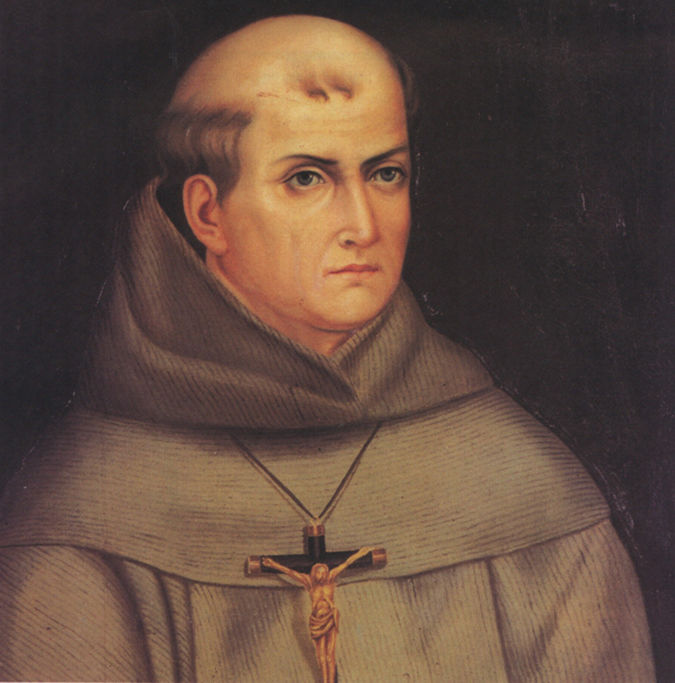America’s next saint will be the man who evangelized California and is associated with the beginnings of Los Angeles.
Pope Francis announced last week that he intends to canonize Blessed Junípero Serra, OFM, when he comes to the United States next September.
This is great news and I am grateful to our Holy Father for this gift to California and the Americas.
I wish the pope was coming to Los Angeles, which Padre Serra originally called El Pueblo de Nuestra Se√±ora de los Angeles de Porciuncula (“The Town of Our Lady of the Angels of Porciuncula”).
But the pope told reporters that he will likely celebrate the canonization at the Basilica of the National Shrine of the Immaculate Conception in Washington, D.C., because this will be a “national event.”
Indeed, Padre Serra’s canonization will be a beautiful day in the life of our nation. It will be a day to remember that our state and our country — and all of the nations of the Americas — are born from the Christian mission and built on Christian foundations.
It will also be a time to reflect on the close spiritual ties that bind Mexico, the Hispanic people, and the United States. When Padre Serra came from Spain to Mexico in December 1749, he walked nearly 300 miles to consecrate his mission at the Shrine of Our Lady of Guadalupe before coming to California.
His story reminds us that in God’s plan of salvation, the Gospel was first preached in this country by Spanish missionaries from Mexico, under the sign of the Virgin of Guadalupe, the bright star of America’s first evangelization.
But the pope’s announcement has also revived difficult and bitter memories about the treatment of Native Americans during the colonial and missionary period of California’s history.
The Church has acknowledged and asked pardon for the cruelty and abuses of colonial leaders and even some missionaries. The Church has also recognized with deep regret that the colonial project disturbed and in some cases destroyed traditional ways of life.
St. John Paul II made these points during his 1987 visit to California and the American Southwest, and again during the examination of conscience that was part of the Church’s commemoration of the millennial year 2000.
We cannot judge 18th century attitudes and behavior by 21st century standards. But the demands of Gospel love are the same in every age. And it is sad but true that, as John Paul said, in bringing the Gospel to the Americas “not all the members of the Church lived up to their Christian responsibilities.”
Some Christians, in fact, “instead of offering to the world the witness of a life inspired by the values of faith, indulged in ways of thinking and acting which were truly forms of counter-witness and scandal.”
But this was not the case with Padre Serra. Even critical historians admit that he and his fellow missionaries were protectors and defenders of the Native peoples against colonial exploitation and violence.
Padre Serra knew the writings and experience of the Dominican missionary, Bartolomé de Las Casas, in Central America. Like Las Casas, Padre Serra was bold and articulate in fighting against the civil authorities to defend the humanity and rights of indigenous peoples.
In my own study and reflection, I have come to the conclusion that Padre Serra should be remembered alongside Las Casas — as one of the pioneers of human rights and human development in the Americas.
His 1773 memorandum (or Representación) to the colonial Viceroy in Mexico City is probably the first “bill of rights” published in North America. In this document, he advanced detailed practical recommendations for improving the spiritual and material well-being of California’s indigenous people.
He criticized their cruel mistreatment at the hands of the colonial military commander and he urged that the commander be removed from office.
To prevent future abuses, Padre Serra demanded that the missionaries be restored to full authority over “the training, governance, punishment and upbringing of the baptized Indians and those who will be baptized.”
Such a policy, he concluded, was “in uniformity with the law of nature.”
The historical record confirms what Pope Francis believes: that Blessed Junípero Serra was a man of heroic virtue and holiness who had only one burning ambition — to bring the good news of Jesus Christ to the peoples of the New World.
Whatever human faults he may have had and whatever mistakes he may have made, there is no questioning that he lived a life of sacrifice and self-denial. And he died here in California, having given his life out of love for the Gospel and the people he came to serve.
The canonization of Padre Serra will be an important sign in this new era of globalization and cultural encounter. In our continental mission of the new evangelization, we have much to learn from Padre Serra and the first missionaries to the Americas.
The missionaries of that first generation were creative and pioneering students of the indigenous peoples and cultures they served. They learned the local languages, customs, and beliefs. And they sowed the seeds of the Gospel to create a rich Christian civilization — expressed in poems and plays, paintings and statues, songs, prayers, devotions, architecture and even laws and policies.
All of this should instruct and inspire us as we go forward to be the next generation of missionaries to California and the Americas.
So as we pray for each other this week, let’s thank God for this gift of our new saint, Junípero Serra.
And let us ask Our Lady of Guadalupe to help us to continue her work and the work of America’s first missionaries — in offering Jesus Christ to every man and woman and promoting justice and human dignity.

